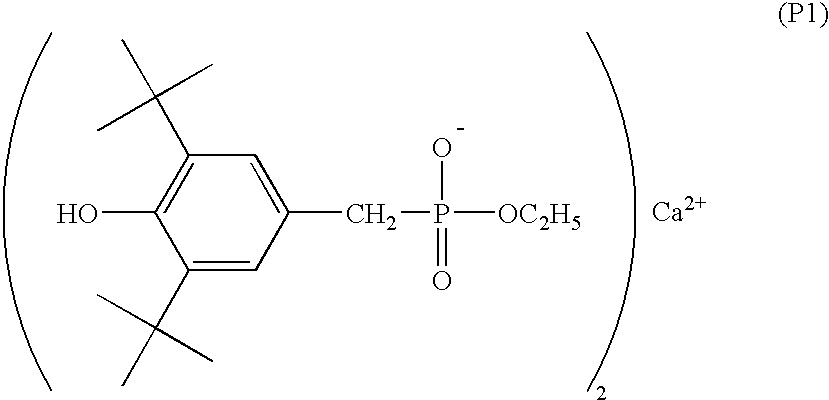Method for decreasing the cyclic oligomer content in polyester product
a technology of cyclic oligomer and polyester, which is applied in the direction of synthetic resin layered products, chemical/physical processes, tubular articles, etc., can solve problems such as human hazards, and achieve the effects of reducing the amount of pi disclosed, reducing the cyclic oligomer content in the obtained pet chips and the processed product thereof, and reducing the addition amount of pi
- Summary
- Abstract
- Description
- Claims
- Application Information
AI Technical Summary
Benefits of technology
Problems solved by technology
Method used
Image
Examples
example 1
[0045] Taking PTA and EG as raw materials. The quantity of PTA is 10.38 kg. The added mole ratio of EG / PTA is 1.5. Blending into slurry and adding phosphoric acid with an amount of 140 ppm based on the weight of polymer. Raising the temperature up to 200.degree. C..about.250.degree. C. Proceeding with esterification for 4 hours under reaction pressure of 1.5.about.2.0 Kg / cm.sup.2. While the esterification ratio has reached over 95%, adding PI compound (Brand name: Irganox-1425, source: Ciba Corp.), calcium phosphate Ca.sub.3(PO.sub.4).sub.2, and germanium dioxide catalyst respectively, the amount of added Irganox-1425 being 1000 ppm based on the weight of polymer, the amount of added Ca.sub.3(PO.sub.4).sub.2 being 200 ppm based on the weight of polymer, and the amount of added germanium dioxide catalyst being 140 ppm based on the weight of polymer. After the addition of aforementioned additives, vacuum polymerization reaction is proceeded. The first stage polymerization reaction tak...
example 2
[0049] Process is the same as that of Example 1, however, only adding calcium phosphate Ca.sub.3(PO.sub.4).sub.2 in an amount of 450 ppm based on the weight of polymer, and without the addition of PI compound and carboxy phosphonic acid having structure (1).
[0050] After solid phase polymerization reaction and inject-blow-molding as Example 1, the results are listed in Table 1.
example 3
[0051] Process is the same as that of Example 1, however, only adding PI compound Irganox-1425 in an amount of 1000 ppm and carboxy phosphonic acid having structure (1) (TEPA) in an amount of 150 ppm, and without the addition of calcium phosphate.
[0052] After solid phase polymerization reaction and inject-blow-molding as Example 1, the results are listed in Table 1.
PUM
| Property | Measurement | Unit |
|---|---|---|
| melting point | aaaaa | aaaaa |
| temperature | aaaaa | aaaaa |
| mole ratio | aaaaa | aaaaa |
Abstract
Description
Claims
Application Information
 Login to View More
Login to View More - R&D
- Intellectual Property
- Life Sciences
- Materials
- Tech Scout
- Unparalleled Data Quality
- Higher Quality Content
- 60% Fewer Hallucinations
Browse by: Latest US Patents, China's latest patents, Technical Efficacy Thesaurus, Application Domain, Technology Topic, Popular Technical Reports.
© 2025 PatSnap. All rights reserved.Legal|Privacy policy|Modern Slavery Act Transparency Statement|Sitemap|About US| Contact US: help@patsnap.com



